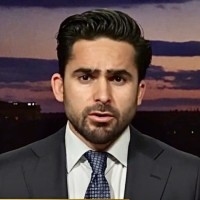
Afghan Promises and a Peace Plan in Trump’s State of the Union Address
At the State of the Union, President Trump endorsed peace talks with the Taliban and promised that he continues to work to “end America’s wars in the Middle East” and bring troops home. He stated:
“In Afghanistan, the determination and valor of our warfighters has allowed us to make tremendous progress, and peace talks are underway. I am not looking to kill hundreds of thousands of people in Afghanistan, many of them innocent. It is also not our function to serve other nations as a law enforcement agency. These are warfighters, the best in the world, and they either want to fight to win or not fight at all. We are working to finally end America’s longest war and bring our troops back home!”
The US-Taliban talks
Mark Esper, the United States Defense Secretary, stated intent to reduce the number of troops to 8,600 from 14,000 with or without a deal with the Taliban. This aligns with statements made this past Monday by US Secretary of State Mike Pompeo that the Taliban must first give “demonstrable evidence of their will and capacity to reduce violence” for peace talks to progress.
In the past week, US Special Envoy for Peace and Reconciliation Zalmay Khalilzad completed talks in Doha, Qatar where he met with the Taliban political office and later with the Afghan political community in Afghanistan. There have been numerous talks behind closed doors and open discussions with the Taliban on issues of reduction of violence, US troop withdrawal, and a possible interim government to end the Afghan conflict. Nonetheless, nothing is promising, and Afghanistan is an unpredictable country with so many elements in flux.
A US deal with the Taliban will be condition-based primarily anchored on the US troop withdrawal, the Taliban commitment to cut ties with al-Qaeda and the renunciation of Afghan soil as a place to plan attacks against the United States and its allies.
The Afghan dilemma
The prolonged ethnic conflict in Afghanistan is at the root of the political rift in Afghanistan. A race for power and supremacy supplanted any rational opportunities for compromise in the inner workings of the Afghan political community. Ethnonationalism is on the rise thus escalating tensions between tribes and ethnicities and — most importantly — among the youth of Afghanistan. A September 2019 presidential election stirred deeper chaos and left its people uncertain over the future of their country.
The Taliban game of politics
Taliban has been rather successful in the advancement of their interests of power and recognition. A regime that was established in the 1990s and toppled by the US in 2001 has now emerged with a mission to build a global reputation and controls a significant portion of Afghan territory, where they set up an Islamic Emirate or similar form of government. Establishment of such a political system nationwide is their strategic objective and a peace deal — or no deal — will not change that.
Taliban have said recently that they agreed to a short-term ceasefire, but left any questions about a permanent ceasefire unanswered until an agreement with the US on troop withdrawal is reached. They hesitate to hold any talks with the Afghan government as they believe the Afghan government is weak and is unready to negotiate and respond to Taliban demands. The Afghan government simply wants the Taliban to surrender and end the violence. This has become a deal-breaker for intra-Afghan dialogue.
Talks between the US and the Taliban are only the first step of a long process. Intra-Afghan dialogue — where the Taliban meet with Afghan officials — is the next step. In this phase, both sides of the conflict will discuss key barriers, demands, amendments to the constitution to increase the likelihood of success in reaching sustainable peace in Afghanistan.
Promising future?
Convincing the Afghan political community to negotiate with the Taliban is the hardest part of achieving Afghan peace. Throughout the nine rounds of peace talks, the Taliban presented themselves professionally with one voice and one strategy while the Afghan representatives seem to lack a clear vision with a government that appears unsupportive of their efforts. The Afghan government has not finalized the list of peace talk participants yet.
Here are three possible scenarios for Afghanistan
- Presidential election: A new government should be established through a second round of elections between the two front-runners given that candidates failed to reach 52 percent of the vote. The winner with 52 percent of the vote would become the president of Afghanistan and will have to negotiate with the Taliban in the next 5 years.
- Interim government: It is a reasonable option that an interim government should be formed until a stable Afghanistan can create a new government. The last elections were a complete failure due to security challenges, electoral fraud, technical difficulties and a low voter turnout (approximately 1.5 million voted in a country of 35 million citizens), thus an interim government offers a path forward for now.
The continuation of the current regime: It is even more likely that the current regime retains power in a situation where a second round of elections are indecisive and the Afghan political community cannot compromise on an interim government.
Afghanistan’s future is unpredictable with so many moving parts though Afghans are hopeful that peace is possible. Trump’s State of the Union speech acted as yet another reminder that the situation in the country continues to perplex domestic and international political actors as they continually seek opportunities to end the decades of violence.


2 comments